How to Honor Native American Traditions in Modern Life
In a world dominated by fast-paced technology and modern conveniences, have you ever felt a longing for a deeper connection to the land and ancient wisdom? Native American traditions offer a rich tapestry of knowledge, spirituality, and sustainable practices that can enrich our lives in profound ways. But how can we honor these traditions without appropriating or disrespecting them?
Imagine starting your day with a moment of gratitude for Mother Earth, preparing meals with indigenous ingredients, or adorning your home with authentic Native American art. These small acts can not only bring more meaning to your daily routine but also help preserve and celebrate a culture that has withstood centuries of challenges. 🌿🏹🎨
In this blog post, we’ll explore six essential ways to honor Native American traditions in modern life. From understanding the core values of Native American culture to advocating for indigenous rights, you’ll discover how to meaningfully incorporate these ancient practices into your contemporary lifestyle. Let’s embark on this journey of respect, learning, and cultural appreciation together.
Understanding Native American Culture
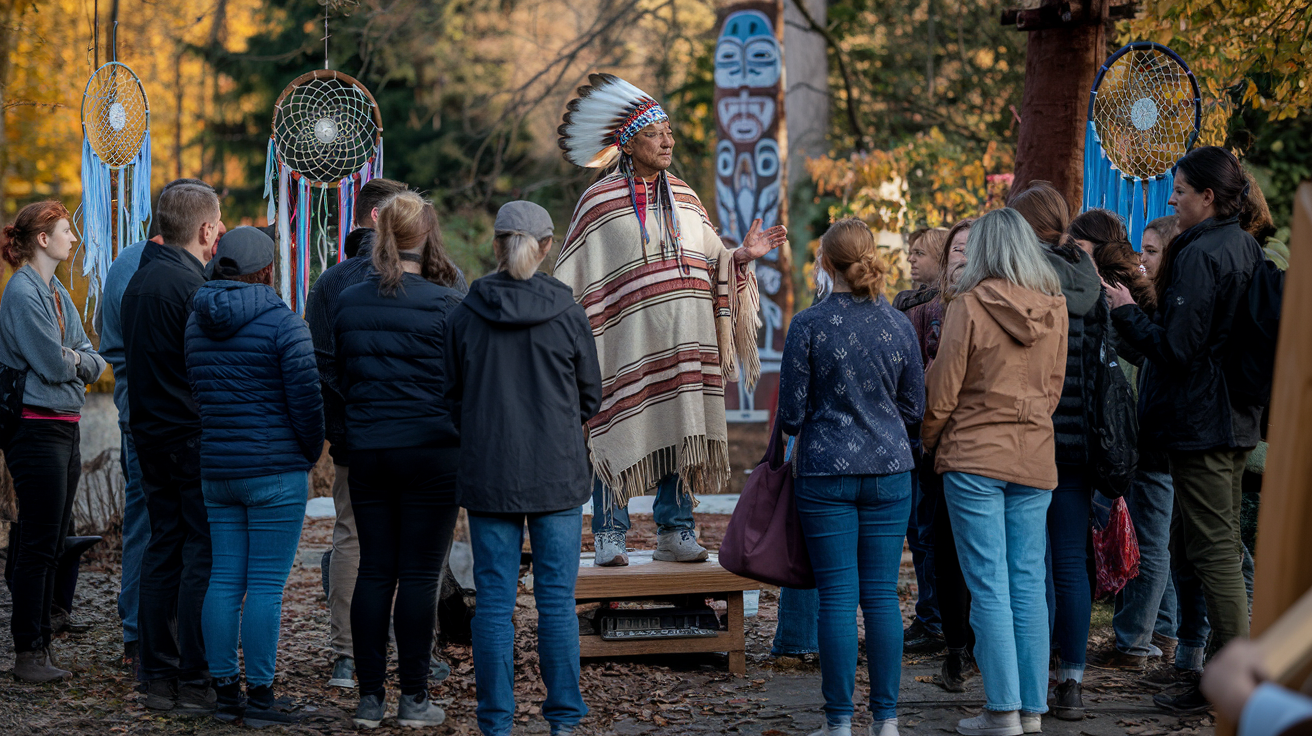
A. Diversity of tribes and traditions
Native American culture is incredibly diverse, with over 570 federally recognized tribes in the United States alone. Each tribe has its own unique customs, languages, and traditions. For example:
| Region | Example Tribes | Notable Traditions |
|---|---|---|
| Northeast | Iroquois, Mohawk | Longhouse societies, wampum belts |
| Southeast | Cherokee, Seminole | Green Corn Ceremony, stickball |
| Plains | Sioux, Cheyenne | Sun Dance, buffalo hunting |
| Southwest | Navajo, Hopi | Kachina dolls, sand painting |
| Northwest | Tlingit, Haida | Totem poles, potlatch ceremonies |
This diversity highlights the importance of recognizing that Native American culture is not monolithic, but rather a rich tapestry of distinct tribal identities.
B. Core values and beliefs
Despite the diversity among tribes, many Native American cultures share common core values and beliefs:
- Respect for nature and the environment
- Emphasis on community and family
- Honoring of elders and ancestors
- Belief in the interconnectedness of all living things
- Importance of oral traditions and storytelling
- Spiritual connection to the land
These values often manifest in daily practices, ceremonies, and worldviews that prioritize harmony with nature and communal well-being over individual gain.
C. Importance of preserving heritage
Preserving Native American heritage is crucial for several reasons:
- Cultural continuity: Maintaining traditions ensures that future generations can connect with their roots
- Historical understanding: Native American history is an integral part of the broader American narrative
- Environmental wisdom: Traditional knowledge often includes sustainable practices that are relevant today
- Social healing: Acknowledging and respecting Native cultures can help address historical injustices
Efforts to preserve heritage include language revitalization programs, cultural education initiatives, and the protection of sacred sites. By understanding and honoring Native American culture, we can contribute to a more inclusive and culturally rich society.
Incorporating Native American Wisdom in Daily Life
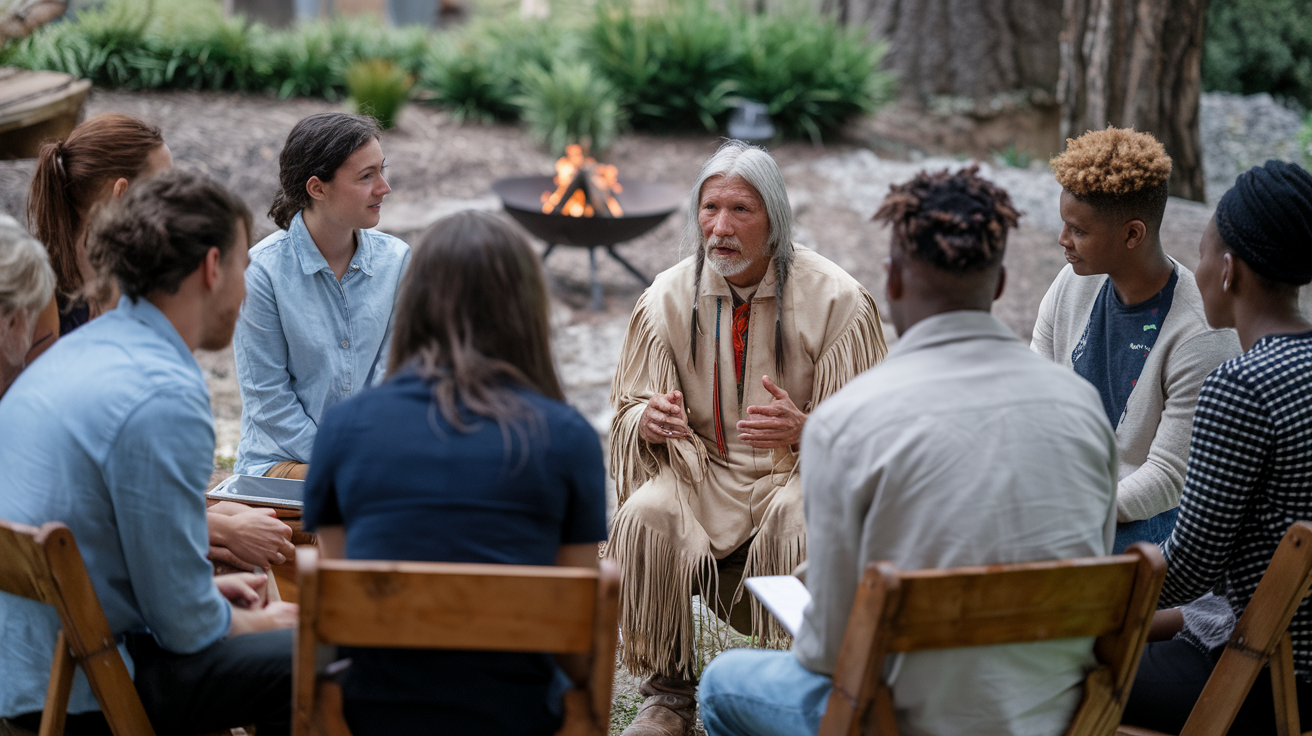
Respect for nature and the environment
Native American wisdom teaches us to live in harmony with nature, recognizing our interconnectedness with the earth and all living beings. Here are some ways to incorporate this respect into your daily life:
- Practice sustainable living: Reduce waste, conserve water, and use eco-friendly products
- Spend time in nature: Take regular walks in parks or forests to reconnect with the natural world
- Support conservation efforts: Volunteer for local environmental organizations or participate in clean-up events
Embracing community and family bonds
Native American cultures emphasize the importance of strong community ties and family relationships. To incorporate this wisdom:
- Organize regular family gatherings or community events
- Volunteer in your local community to strengthen social connections
- Practice active listening and empathy in your relationships
Practicing gratitude and mindfulness
Native American traditions often include practices of gratitude and mindfulness. Incorporate these into your daily routine:
| Practice | Description | Benefits |
|---|---|---|
| Morning gratitude | Start each day by expressing thanks for three things | Increases positivity and well-being |
| Mindful eating | Pay attention to the taste, texture, and origin of your food | Enhances appreciation and digestion |
| Nature meditation | Spend time observing and connecting with the natural world | Reduces stress and improves focus |
Honoring elders and their knowledge
In Native American cultures, elders are deeply respected for their wisdom and experience. To honor this tradition:
- Seek advice from older family members or community elders
- Learn and share traditional stories or skills passed down through generations
- Create opportunities for intergenerational learning and exchange
By incorporating these Native American wisdom practices into our modern lives, we can cultivate a deeper connection to nature, strengthen our communities, and develop a more mindful and grateful approach to daily living.
Celebrating Native American Art and Crafts
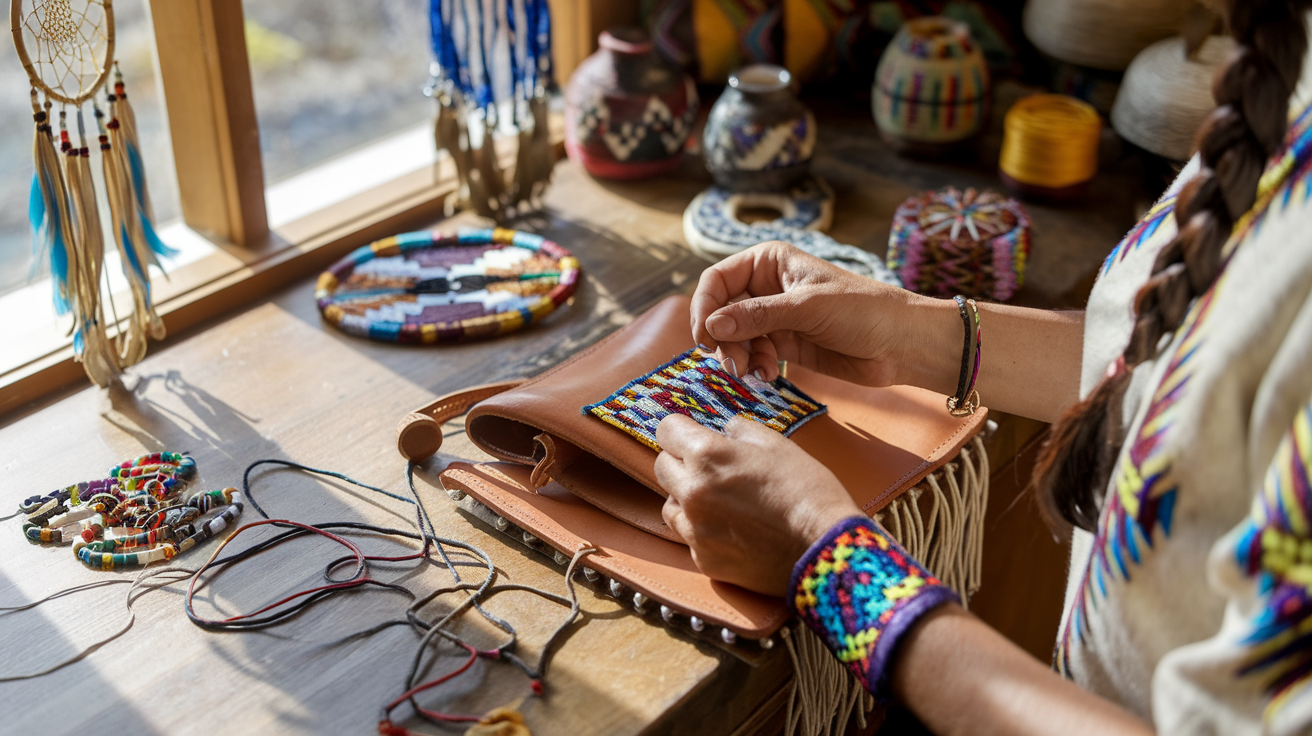
Supporting authentic Native American artisans
Supporting authentic Native American artisans is crucial for preserving tribal heritage and promoting indigenous culture. Here are some ways to ensure you’re supporting genuine Native American art:
- Research the artist and their tribal affiliation
- Look for authenticity certificates or hallmarks
- Purchase from reputable galleries or directly from artists
- Attend Native American art markets and fairs
| Benefits of Supporting Authentic Artisans | Risks of Buying Inauthentic Art |
|---|---|
| Preserves traditional techniques | Misrepresents Native culture |
| Supports Native American communities | Deprives artists of income |
| Ensures high-quality, genuine pieces | Perpetuates stereotypes |
| Promotes cultural understanding | Violates intellectual property |
Learning traditional crafting techniques
Immersing yourself in Native American crafting techniques is an enriching way to honor indigenous traditions. Many tribes offer workshops or classes where you can learn:
- Beadwork
- Pottery making
- Basket weaving
- Leatherwork
Participating in these activities not only helps preserve ancient skills but also deepens your appreciation for Native American artistry.
Displaying Native American artwork respectfully
When showcasing Native American art in your home or office, it’s essential to do so with respect and understanding. Consider the following guidelines:
- Learn about the piece’s cultural significance
- Display ceremonial items appropriately
- Avoid mixing sacred objects with decorative pieces
- Educate others about the artwork’s origin and meaning
By thoughtfully celebrating Native American art and crafts, we can honor indigenous traditions while supporting contemporary Native American lifestyles and artisans. This appreciation contributes to the preservation of tribal heritage and fosters cross-cultural understanding in our modern world.
Embracing Native American Cuisine

Exploring traditional ingredients and recipes
Native American cuisine is a treasure trove of flavors and nutritional wisdom. Traditional ingredients like corn, beans, and squash – known as the “Three Sisters” – form the cornerstone of many indigenous recipes. Here’s a table showcasing some key Native American ingredients and their nutritional benefits:
| Ingredient | Nutritional Benefits |
|---|---|
| Corn | Rich in fiber and antioxidants |
| Beans | High in protein and complex carbohydrates |
| Squash | Packed with vitamins A and C |
| Wild Rice | Contains essential amino acids |
| Berries | High in antioxidants and vitamin C |
Try incorporating these ingredients into your meals with recipes like:
- Three Sisters Stew
- Wild Rice Pilaf
- Berry Wojapi (traditional fruit pudding)
Growing native plants in your garden
Cultivating native plants in your garden is an excellent way to connect with indigenous traditions and support local ecosystems. Some easy-to-grow native plants include:
- Sunflowers
- Sage
- Tobacco (for ceremonial use)
- Sweetgrass
These plants not only provide food but also hold cultural and spiritual significance in many Native American traditions.
Participating in community harvest events
Community harvest events offer a unique opportunity to engage with Native American food traditions firsthand. These gatherings often feature:
- Traditional cooking demonstrations
- Foraging expeditions
- Seed exchanges
- Storytelling about food and cultural practices
By participating in these events, you can deepen your understanding of Native American cuisine while supporting indigenous communities. Now that we’ve explored Native American culinary traditions, let’s look at how you can engage with broader cultural events and celebrations.
Participating in Native American Cultural Events
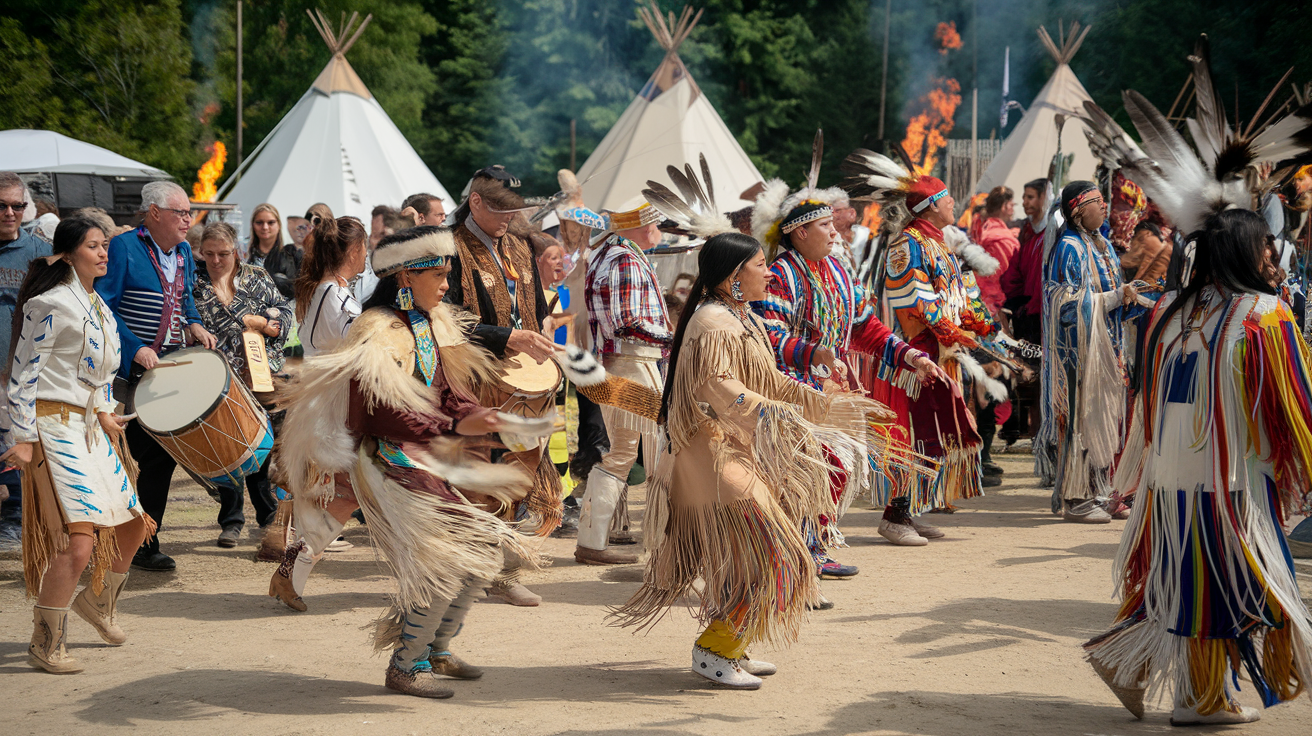
Attending powwows and festivals
Powwows and festivals offer a vibrant gateway into Native American culture. These events showcase traditional dances, music, and regalia, providing an immersive experience for attendees. Here’s what you can expect:
| Event Feature | Description |
|---|---|
| Grand Entry | Opening ceremony with dancers in full regalia |
| Dance Competitions | Various styles including fancy, grass, and jingle dress |
| Drum Circles | Heart of the powwow, providing rhythmic accompaniment |
| Vendor Booths | Native crafts, foods, and educational materials |
To make the most of these events:
- Research the cultural significance beforehand
- Respect photography rules and ask permission when unsure
- Participate in inter-tribal dances when invited
Learning native languages
Preserving Native American languages is crucial for cultural continuity. Many tribes offer language classes or online resources for learners. Benefits include:
- Deeper understanding of Native worldviews
- Strengthening community bonds
- Preserving unique linguistic heritage
Joining cultural education programs
Cultural education programs provide structured learning experiences about Native American traditions. These can range from weekend workshops to semester-long courses. Topics often include:
- Traditional crafts and artistry
- Medicinal plant knowledge
- Storytelling and oral history
- Environmental stewardship practices
Supporting Native American-owned businesses
Patronizing Native American-owned businesses is a practical way to honor traditions and support indigenous communities. Look for:
- Authentic art galleries and craft shops
- Native-owned restaurants featuring traditional cuisine
- Indigenous-led tour companies offering cultural experiences
By actively participating in these cultural events and supporting Native American initiatives, we can contribute to the preservation and celebration of indigenous traditions in modern life. This engagement not only enriches our understanding but also helps ensure the vitality of Native American culture for future generations.
Advocating for Native American Rights
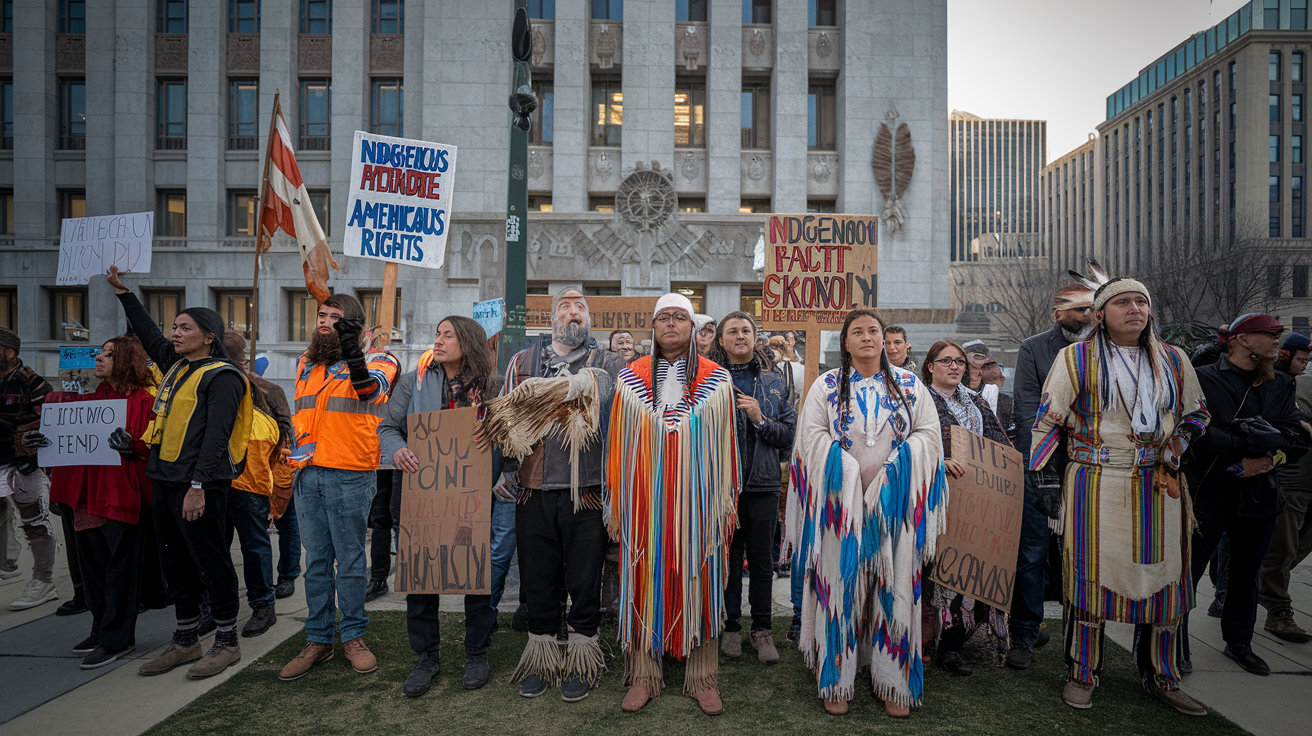
Understanding current issues facing Native communities
Native American communities face numerous challenges that often go unnoticed in mainstream discourse. Some of the most pressing issues include:
- Land rights and sovereignty
- Environmental degradation
- Access to healthcare and education
- Preservation of language and culture
- Economic disparities
To better understand these issues, let’s examine their impact:
| Issue | Impact on Native Communities |
|---|---|
| Land rights | Threat to tribal sovereignty and cultural practices |
| Environmental degradation | Loss of traditional resources and sacred sites |
| Healthcare access | Higher rates of chronic diseases and mental health issues |
| Education access | Lower graduation rates and limited opportunities |
| Cultural preservation | Risk of losing languages and traditional knowledge |
Supporting Native-led organizations and initiatives
One of the most effective ways to advocate for Native American rights is by supporting organizations and initiatives led by indigenous people themselves. This can involve:
- Donating to Native-led nonprofits
- Volunteering for community projects
- Amplifying Native voices on social media
- Purchasing from Native-owned businesses
Promoting accurate representation in media and education
Accurate representation is crucial for combating stereotypes and misconceptions about Native American culture. To promote this:
- Encourage schools to include Native American history and perspectives in curricula
- Support Native American authors, filmmakers, and artists
- Challenge stereotypical portrayals in media
- Educate yourself and others about the diversity of Native cultures
By taking these steps, we can contribute to a more inclusive and respectful society that honors Native American traditions and rights. As we move forward, it’s essential to remember that advocacy is an ongoing process that requires continuous learning and engagement.
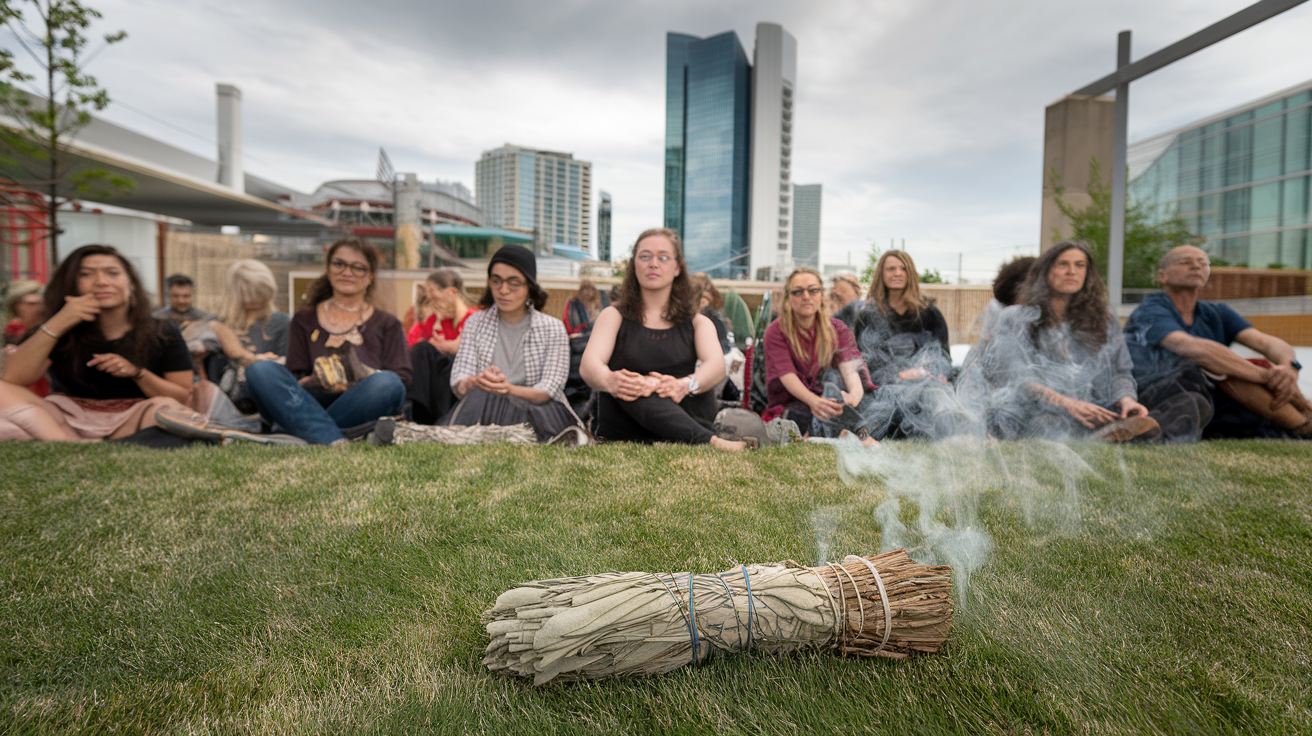
Honoring Native American traditions in modern life is a meaningful way to celebrate diversity, foster cultural understanding, and preserve ancient wisdom. By incorporating Native American principles into our daily routines, appreciating their art and crafts, exploring their cuisine, and participating in cultural events, we can create a richer, more inclusive society that values indigenous heritage.
As we embrace these traditions, it’s crucial to remember the importance of advocating for Native American rights and supporting indigenous communities. By doing so, we not only honor their past but also contribute to a more equitable future. Let us strive to be respectful, mindful, and active participants in preserving and celebrating Native American culture for generations to come.





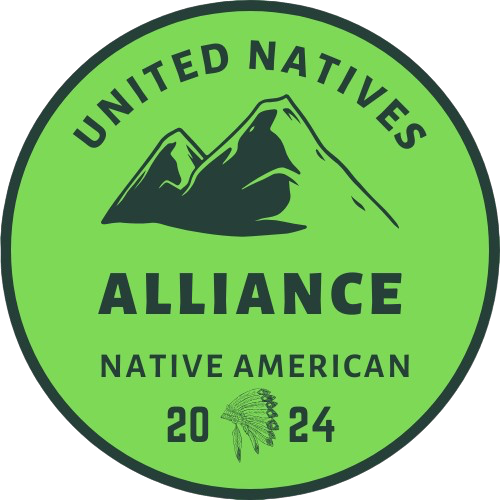
http://wish-club.ru/forums/index.php?autocom=gallery&req=si&img=5236
Very good https://shorturl.at/2breu
Awesome https://lc.cx/xjXBQT
https://shorturl.fm/XIZGD
https://shorturl.fm/FIJkD
https://shorturl.fm/XIZGD
https://shorturl.fm/68Y8V